
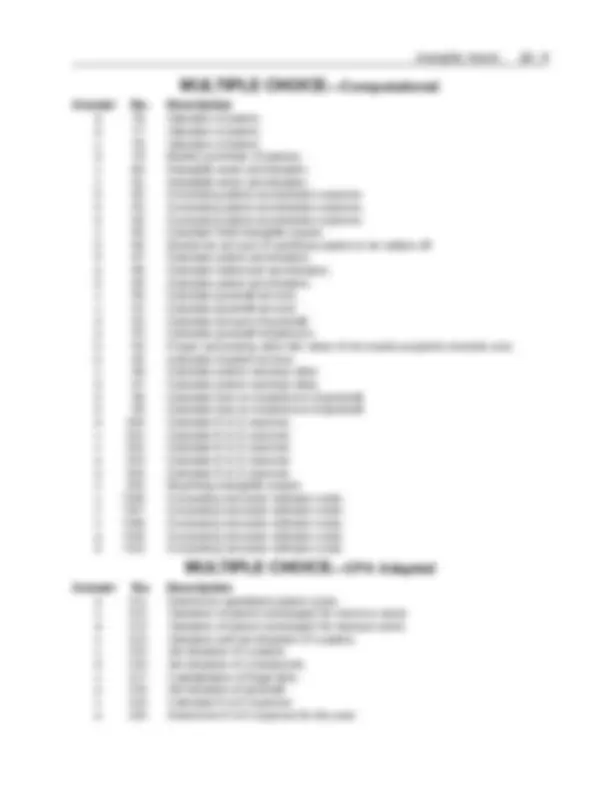
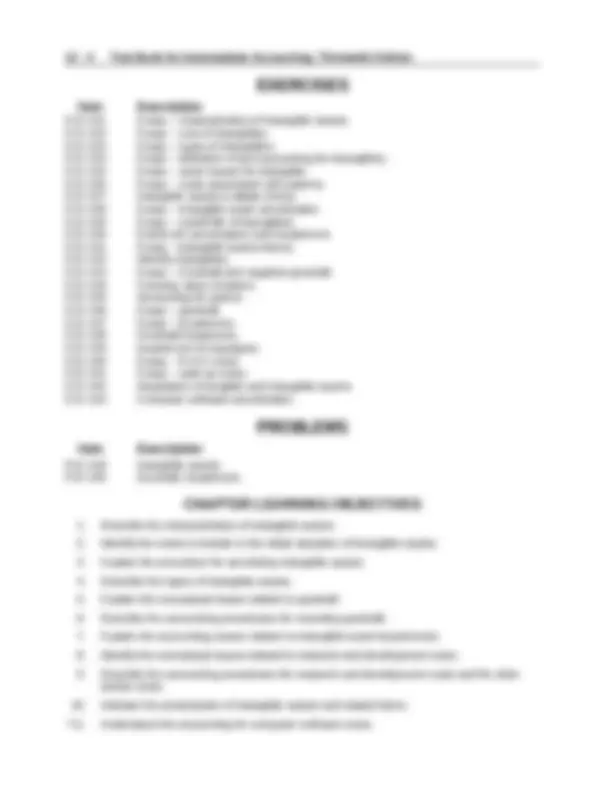
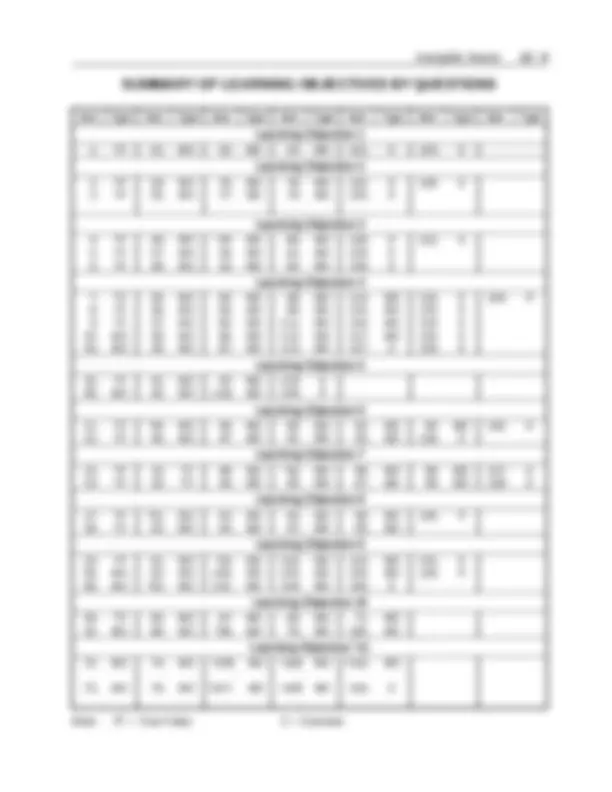
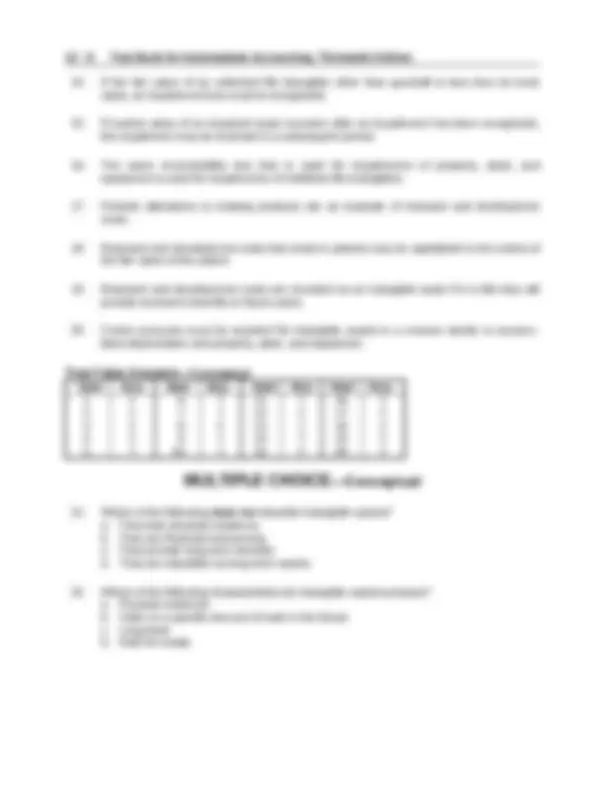
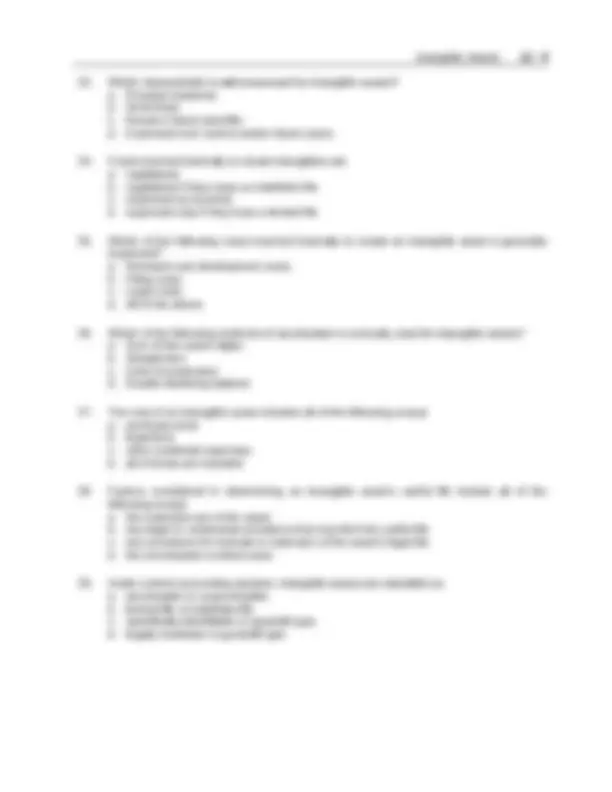
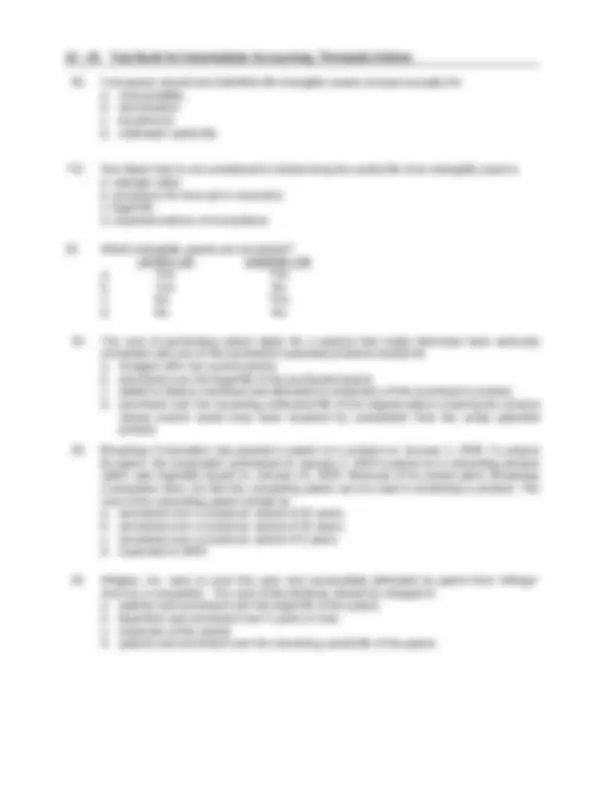
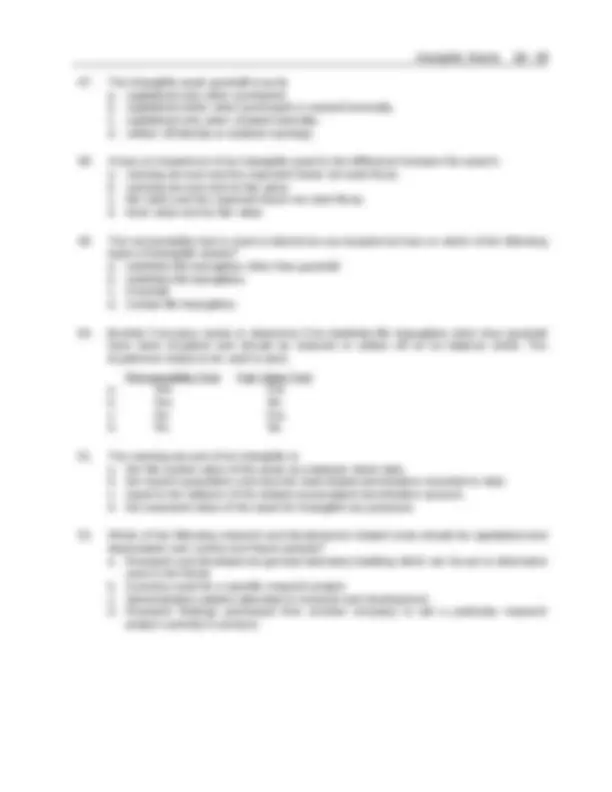
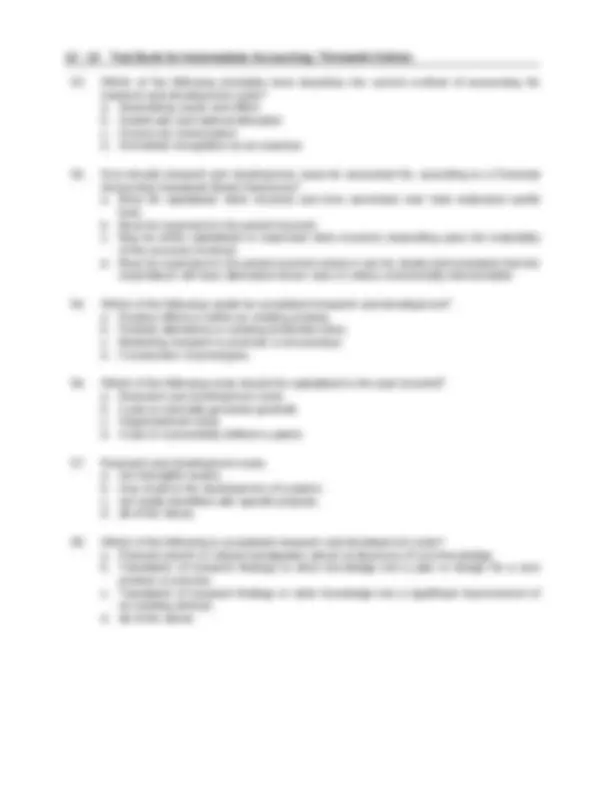
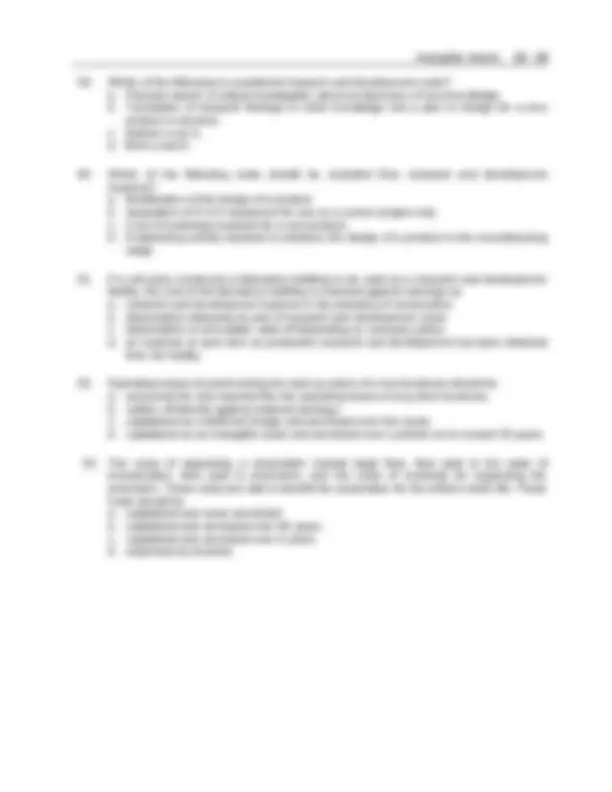
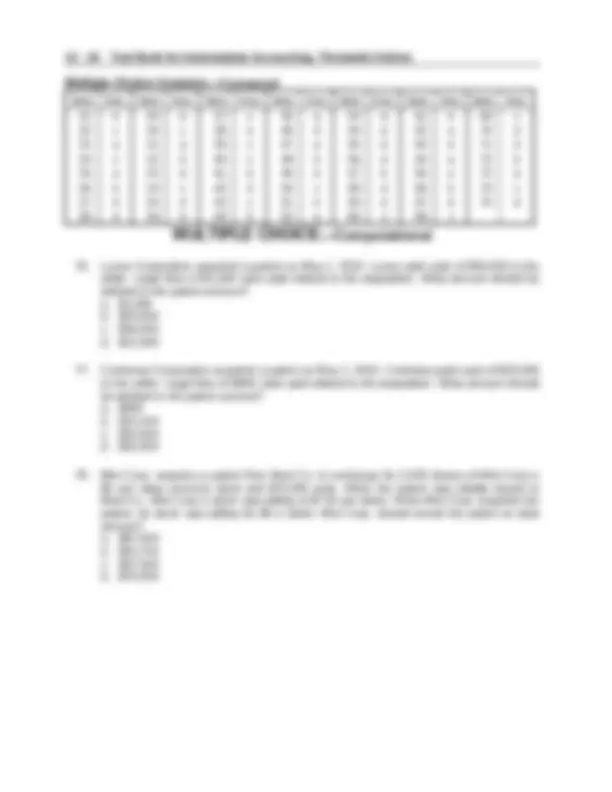
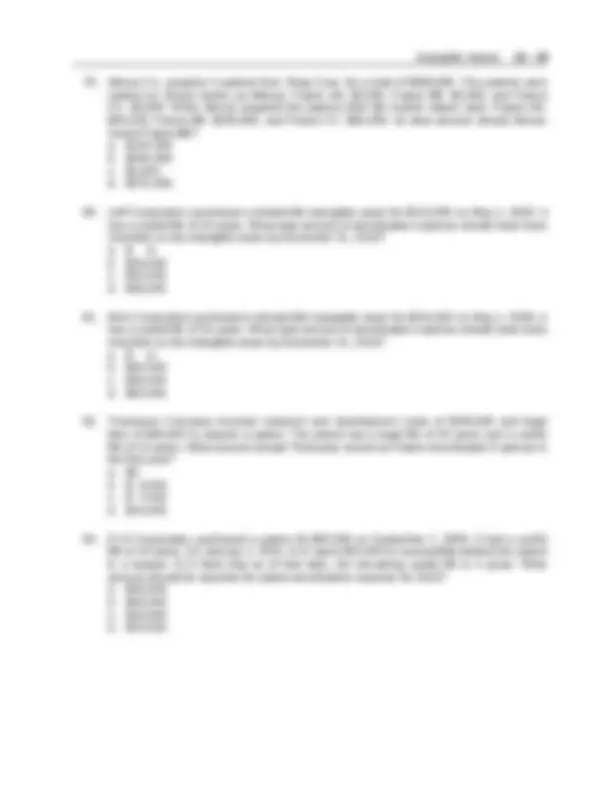
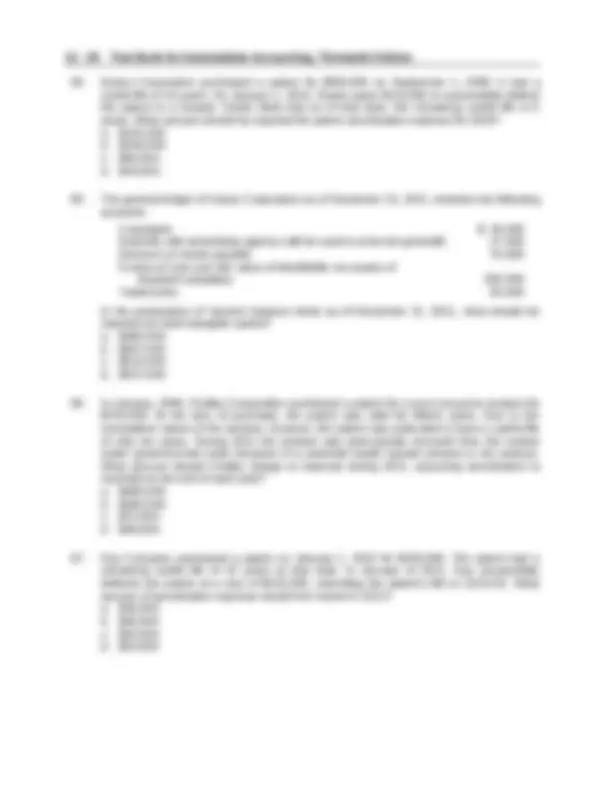
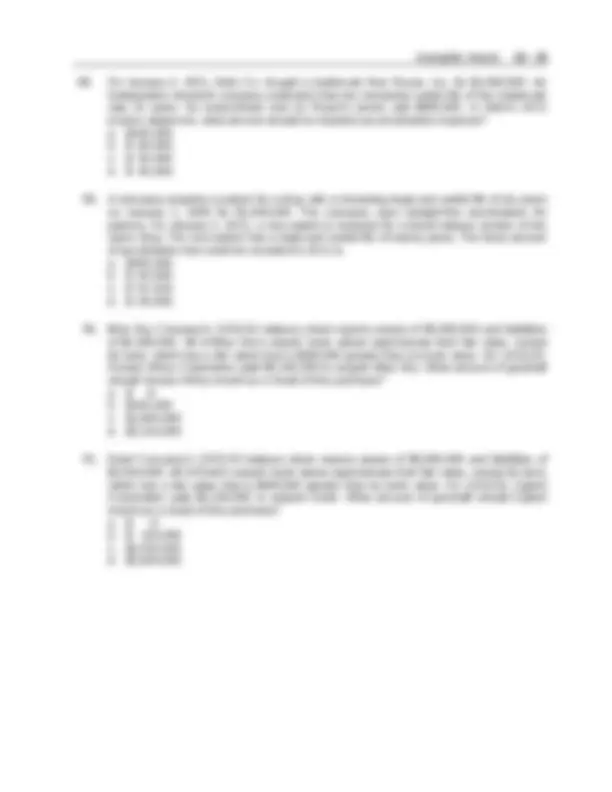
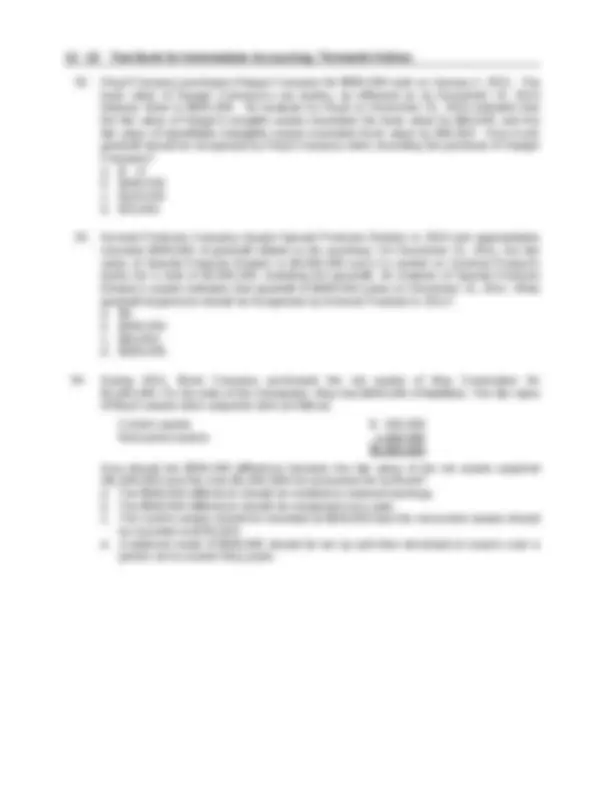
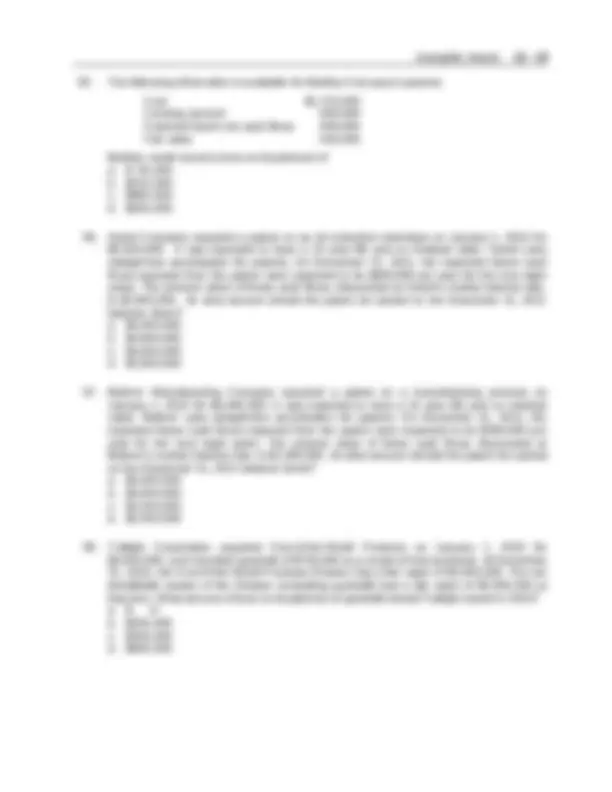
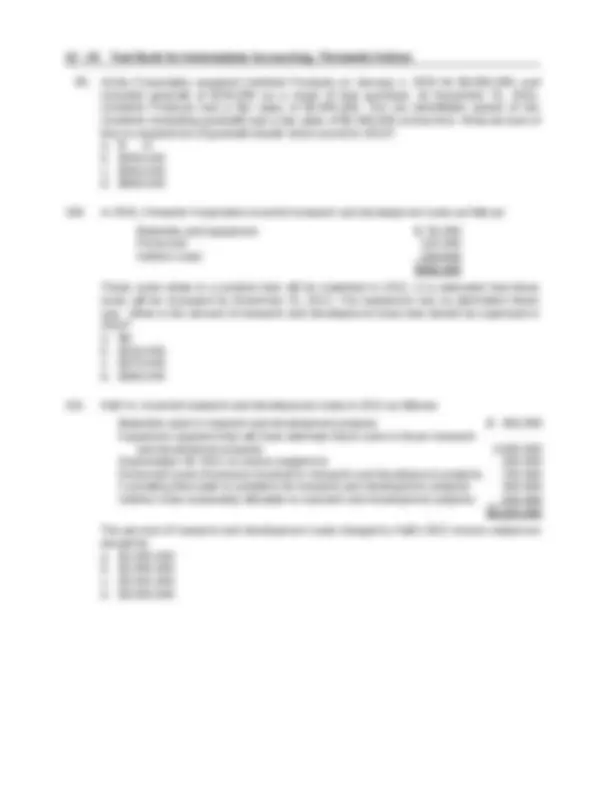
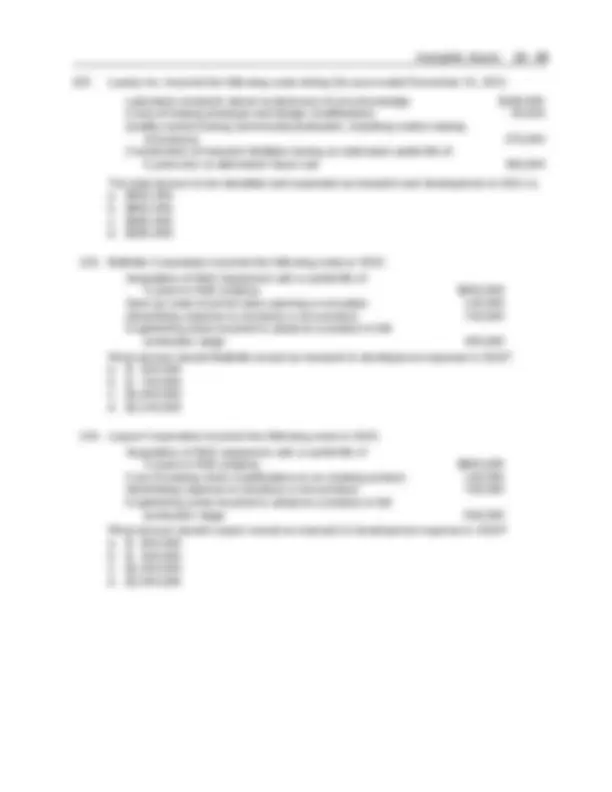
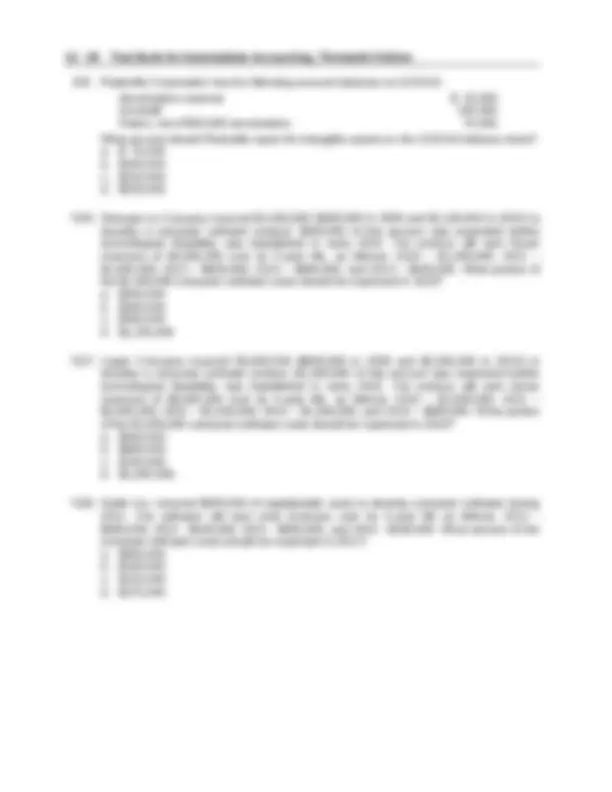
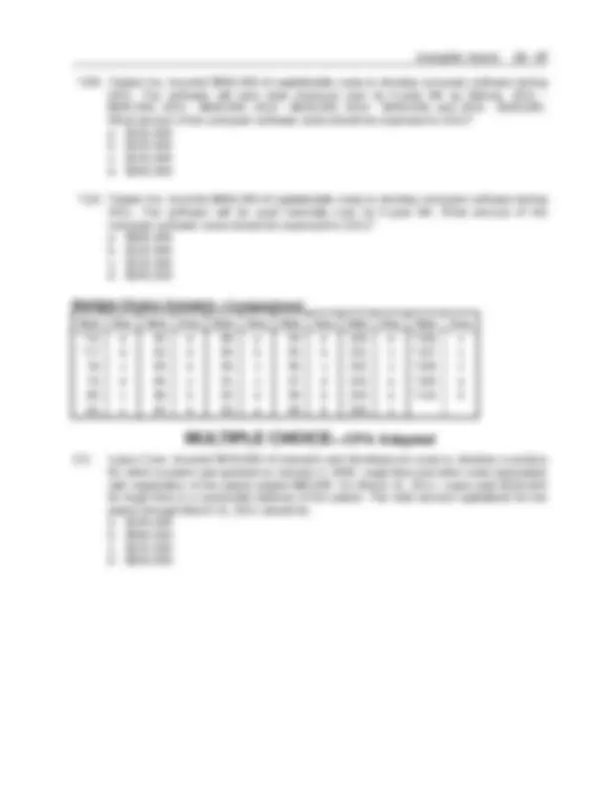
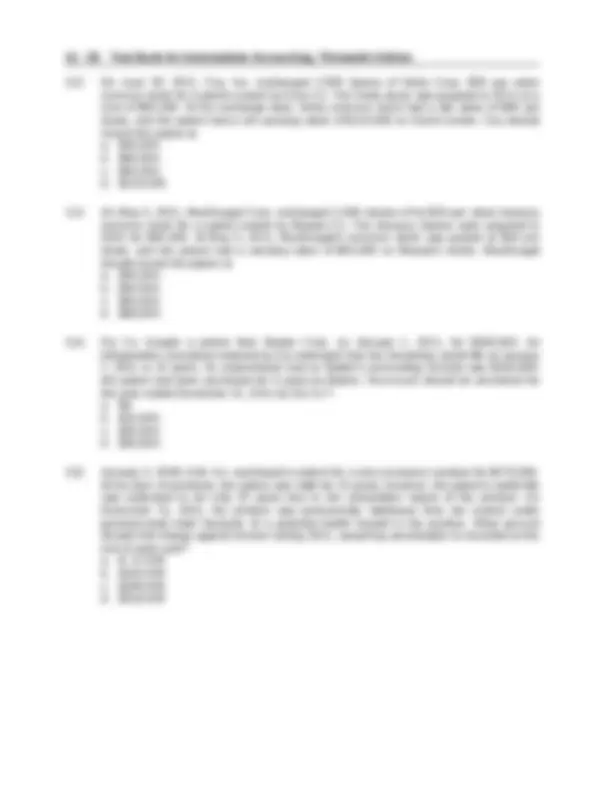
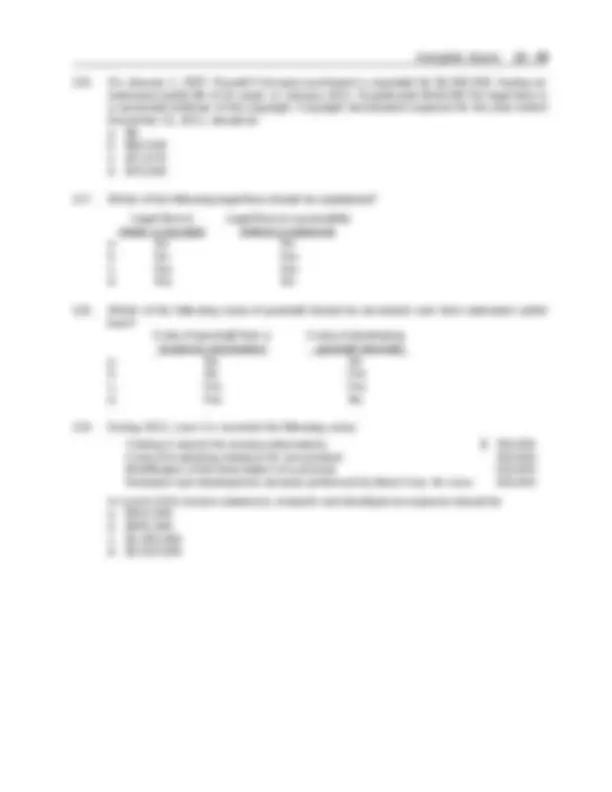
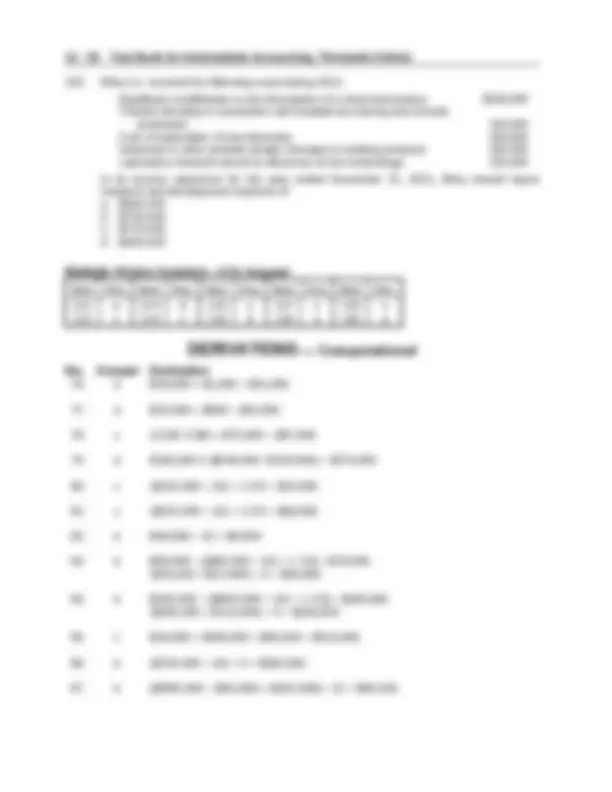
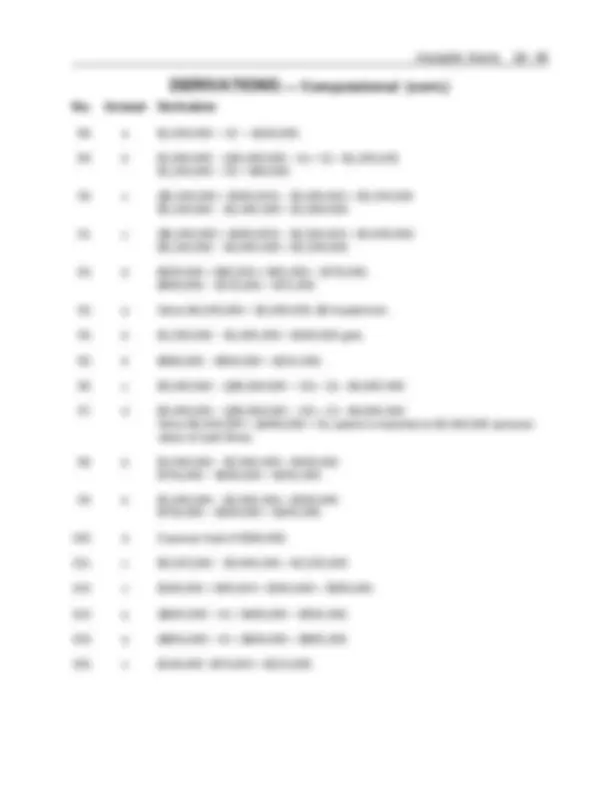
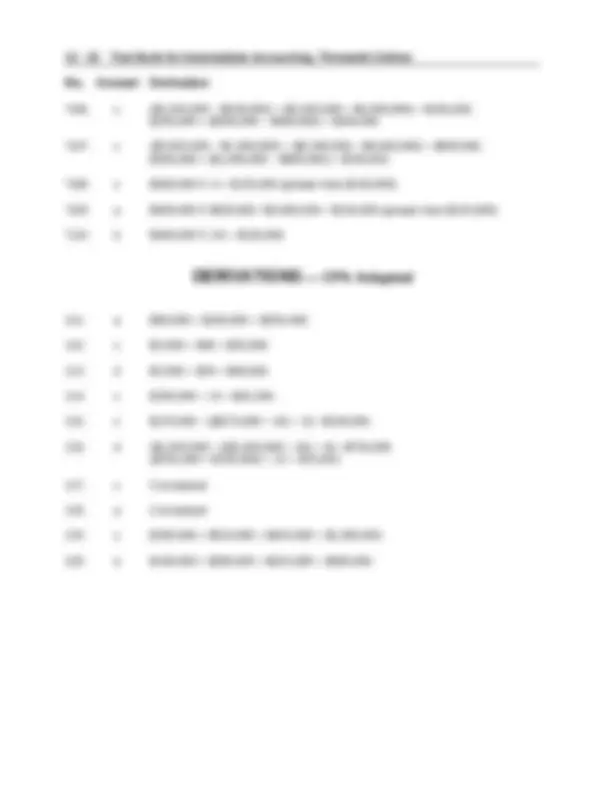
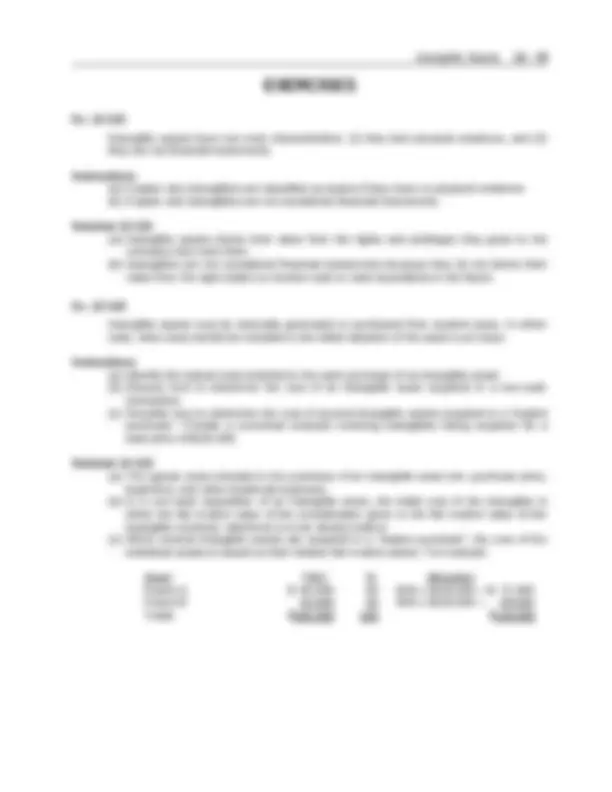
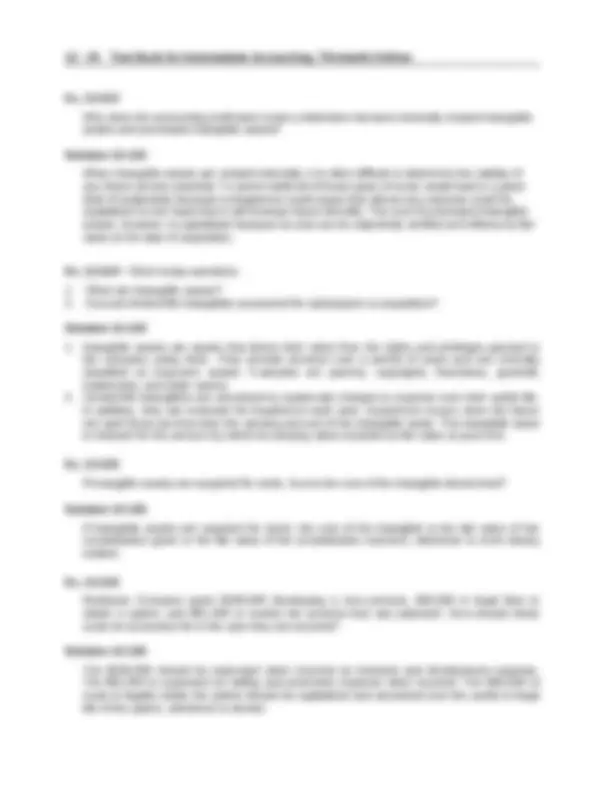
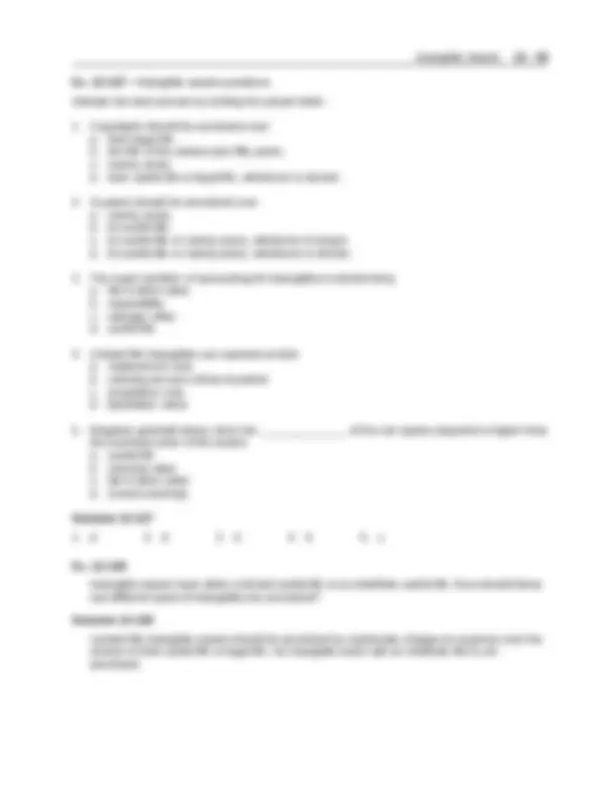
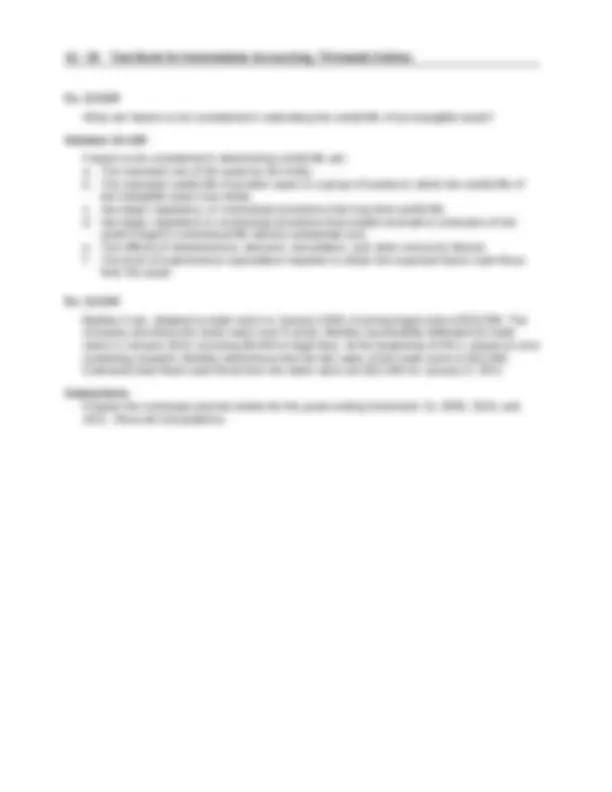
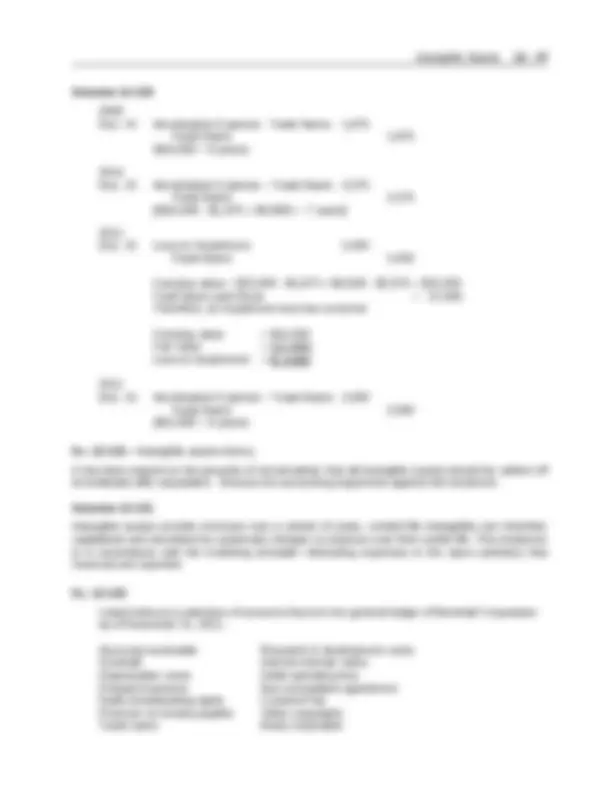
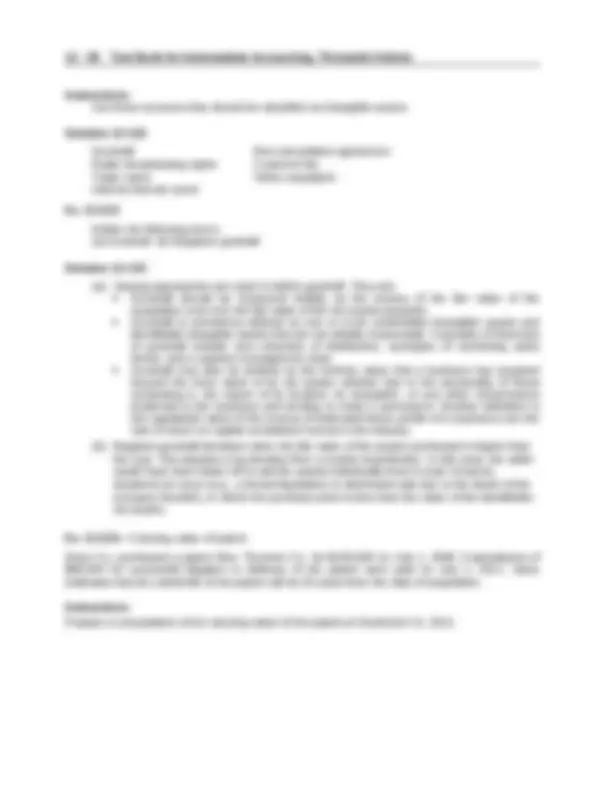
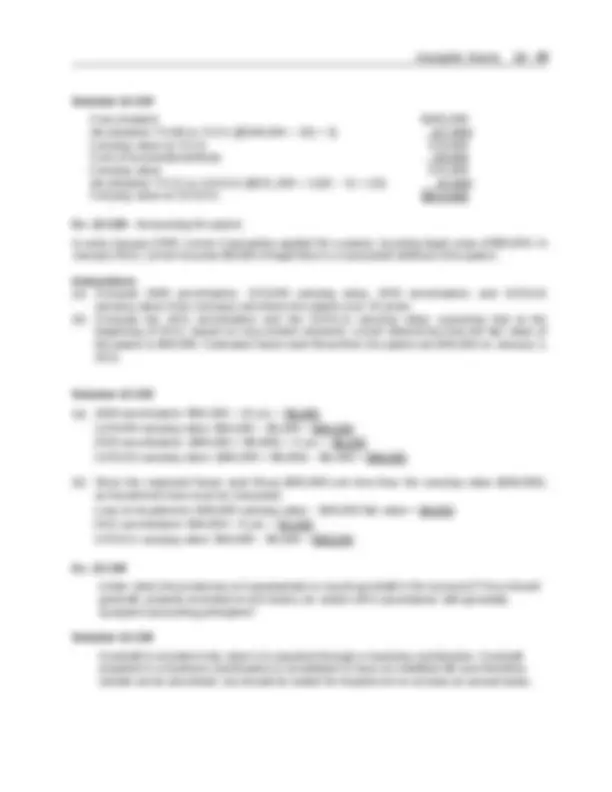
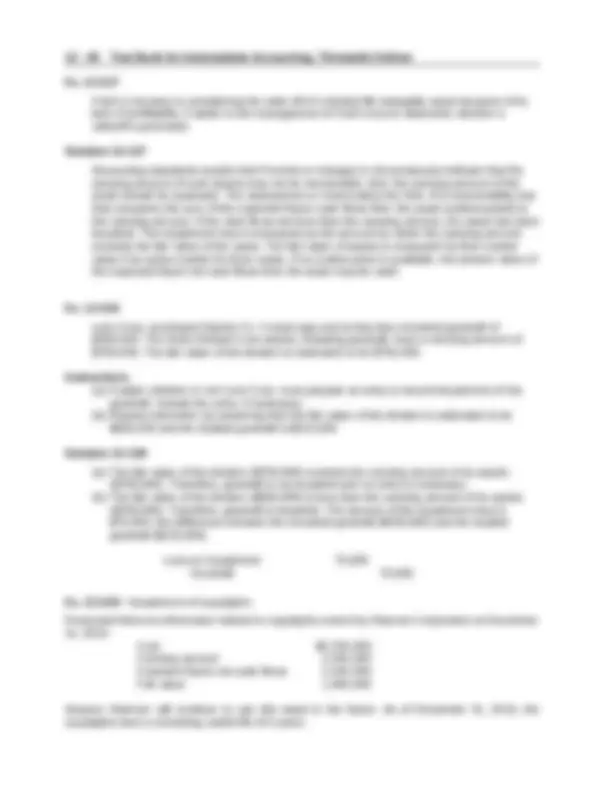
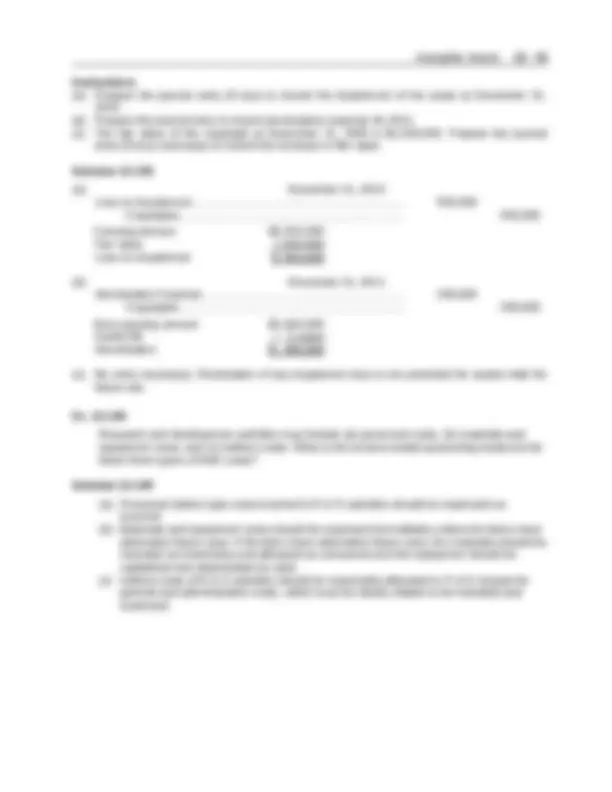
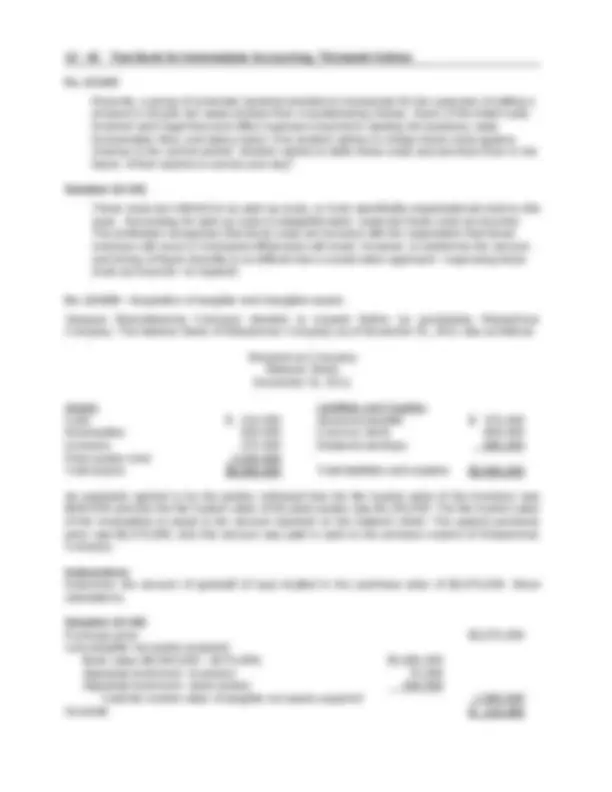
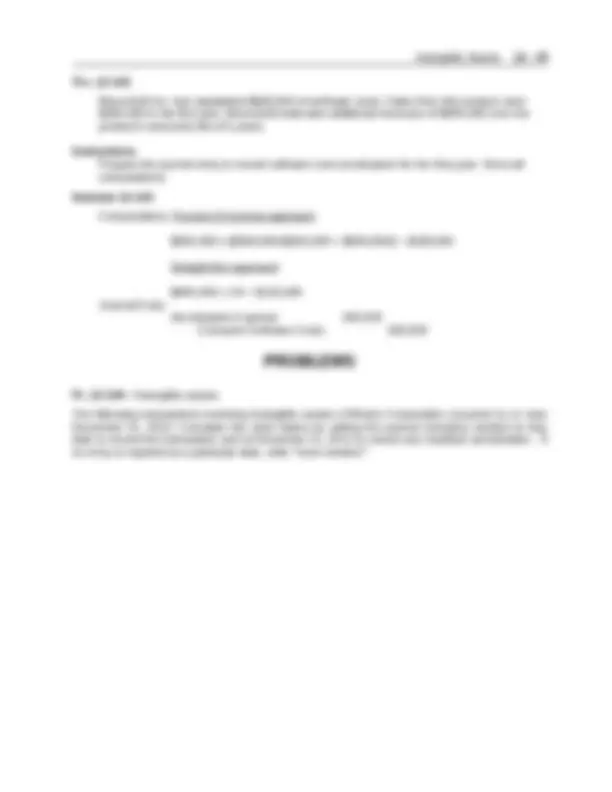
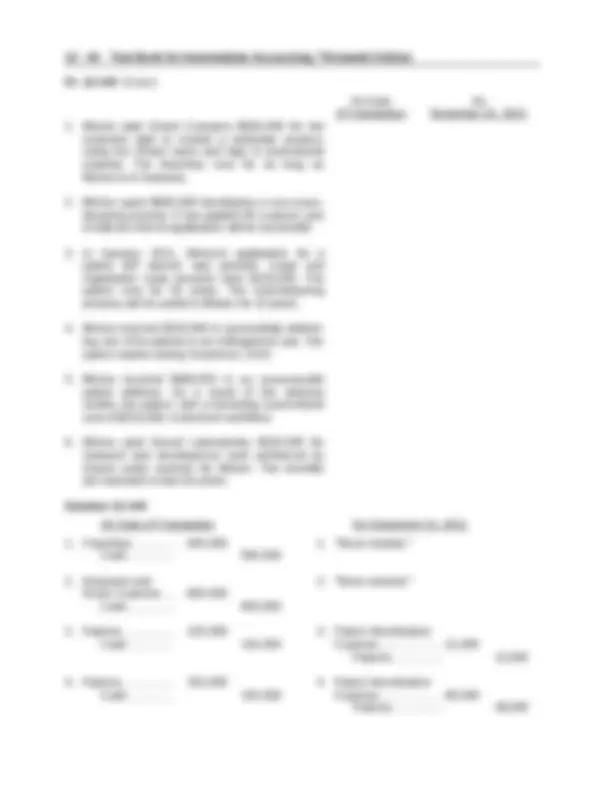
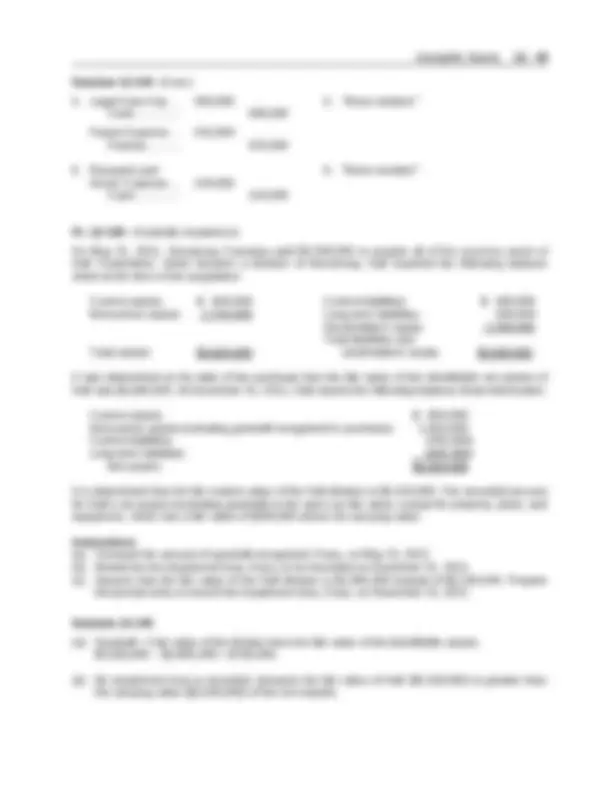
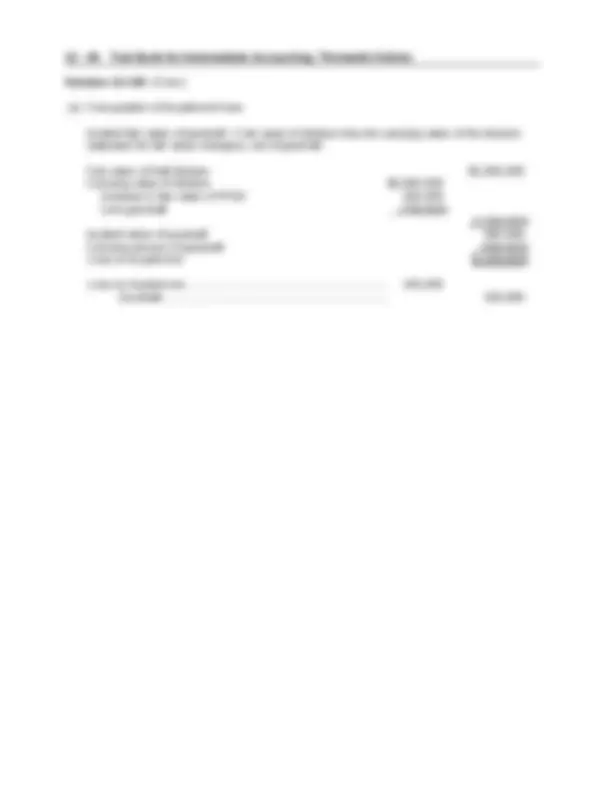
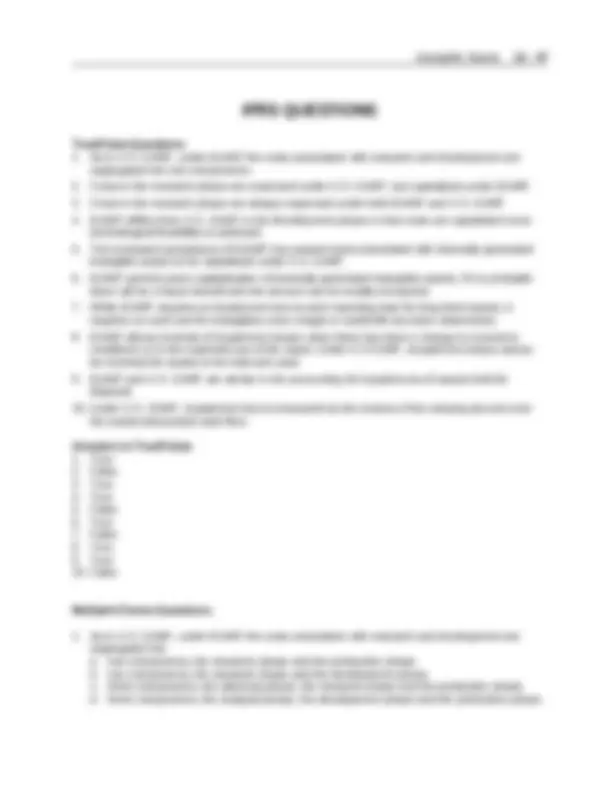
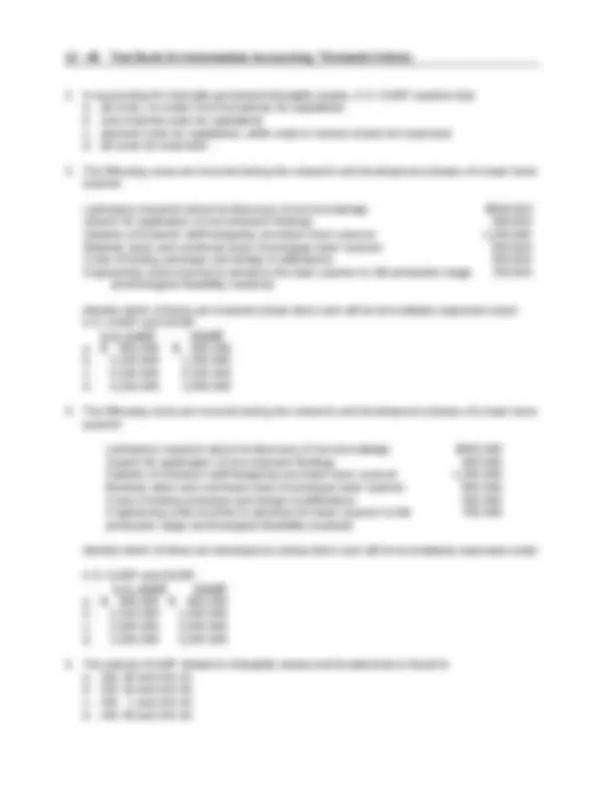
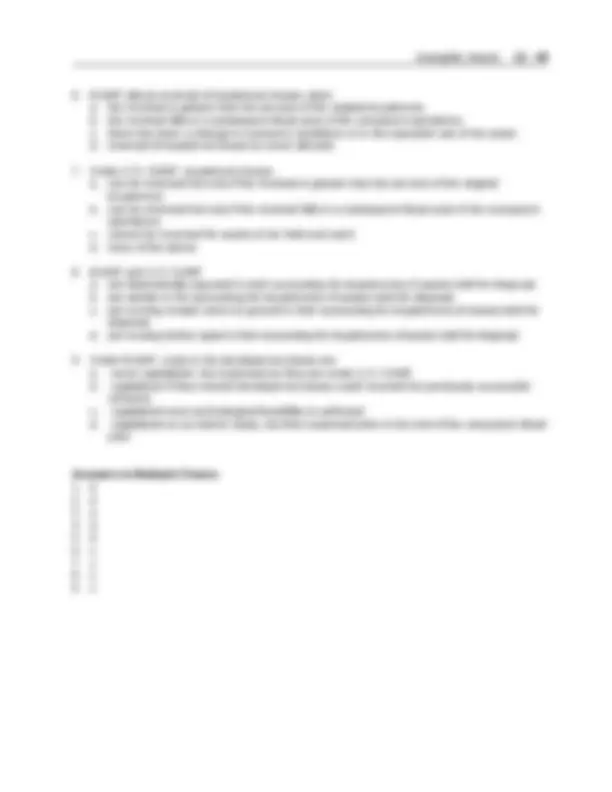
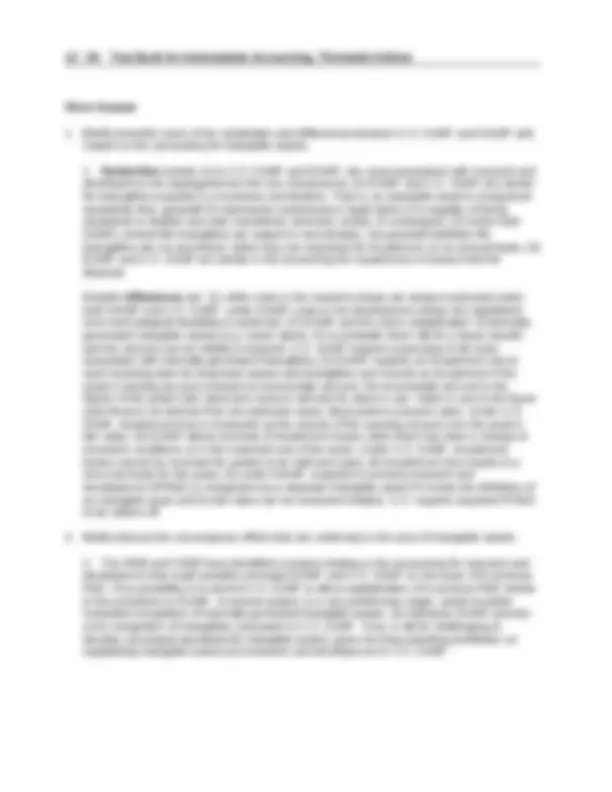


Study with the several resources on Docsity

Earn points by helping other students or get them with a premium plan


Prepare for your exams
Study with the several resources on Docsity

Earn points to download
Earn points by helping other students or get them with a premium plan
Community
Ask the community for help and clear up your study doubts
Discover the best universities in your country according to Docsity users
Free resources
Download our free guides on studying techniques, anxiety management strategies, and thesis advice from Docsity tutors
Easton Company and Lofton Company were combined in a purchase transaction. Easton was able to acquire Lofton at a bargain price. The sum of the market or appraised values of identifiable assets acquired less the fair value of liabilities assumed exceeded the cost to Easton. After revaluing noncurrent assets to zero, there was still some "negative goodwill." Proper accounting treatment by Easton is to report the amount as
Typology: Exams
1 / 50

This page cannot be seen from the preview
Don't miss anything!











































IFRS questions are available at the end of this chapter.
F 1. Characteristics of intangible assets. F 2. Internally created intangibles. F 3. Recording internally generated intangibles. F 4. Amortization of limited-life intangible assets. T 5. Amortization of intangible assets. T 6. Amortizing limited-life intangibles. T 7. Accounting for a customer list. F 8. Amortization of patents. T 9. Modification of an existing patent. T 10. Basic concept of goodwill. T 11. Internally generated goodwill. F 12. Recording internally generated goodwill. T 13. Impairment of intangibles. T 14. Recognition of impairment loss. F 15. Recovery of impairment loss. F 16. Impairment of intangibles. F 17. Example of research and development costs. F 18. Capitalizing research and development costs. F 19. Recording research and development costs. F 20. Reporting intangible assets.
b 21 Characteristics of intangible assets. c 22 Characteristics of intangible assets. a 23 Characteristics of intangible assets. c 24. Accounting for internally-created intangibles. a 25. Research and development costs. b 26. Amortization methods for intangible assets. d 27. Cost of intangible asset. d 28. Factors in determining useful life. b S 29. Classifying intangible assets. c 30. Impairment of intangibles. a 31. Determining intangible asset useful life. b 32. Amortization of intangibles. d 33. Patent amortization. c 34. Patent amortization. d 35. Legal fees associated with patent infringement. b 36. Identification of intangible assets. c 37. Amortization of intangible assets. a 38. Entry to record patent amortization. c S 39. Trademark costs capitalized.
Test Bank for Intermediate Accounting, Thirteenth Edition MULTIPLE CHOICE—Conceptual (cont.)
c 40. Composition of goodwill. b 41. When to record goodwill. d 42. Intangibles during acquisition of company. c 43. Seperability of goodwill. b S 44. Goodwill as master valuation account. a 45. Reporting of "negative goodwill." d 46. Accounting for goodwill. a 47. Recording goodwill. b 48. Impairment of intangible asset. d 49. Recoverability test. c S 50. Impairment test for indefinite-life intangibles. b P 51. Accounting for organization costs. a 52. Capitalization of certain R & D costs. d 53. Accounting principle for R & D expenditures. d 54. Accounting for R & D costs. d 55. Classification of R & D expense. d 56. Costs to defend a patent. b 57. Purpose of R & D costs. d 58. Classification of R & D costs. d 59. Classification of R & D costs. c 60. Costs excluded from R & D expense. b 61. Depreciation of laboratory building used in R & D. a 62. Operating losses during start-up period. d P 63. Accounting for organization costs. a S 64. Classification of R & D expense. a 65. Reporting goodwill. b 66. Intangible asset disclosure. d 67. Expense classification. c P 68. Reporting patent amortization. c 69. Reporting intangibles. d 70. Reporting expenses and losses. d 71. Reporting expenses and losses. b 72. Cost of computer software. d 73. Cost of computer software. c 74. Amortization of computer software costs. d 75. Amortization of computer software costs. P (^) These questions also appear in the Problem-Solving Survival Guide. S (^) These questions also appear in the Study Guide.
Test Bank for Intermediate Accounting, Thirteenth Edition EXERCISES
E12-121 Essay – characteristics of intangible assets. E12-122 Essay – cost of intangibles. E12-123 Essay – types of intangibles. E12-124 Essay – definition of and accounting for intangibles. E12-125 Essay – stock issued for intangible. E12-126 Essay – costs associated with patents. E12-127 Intangible assets multiple choice. E12-128 Essay – intangible asset amortization. E12-129 Essay – useful life of intangibles. E12-130 Entries for amortization and impairment. E12-131 Essay - Intangible assets theory. E12-132 Identify intangibles. E12-133 Essay – Goodwill and negative goodwill. E12-134 Carrying value of patent. E12-135 Accounting for patent. E12-136 Essay – goodwill. E12-137 Essay – impairment. E12-138 Goodwill impairment. E12-139 Impairment of copyrights. E12-140 Essay – R & D costs. E12-141 Essay – start-up costs. E12-142 Acquisition of tangible and intangible assets. E12-143 Computer software amortization. PROBLEMS
P12-144 Intangible assets. P12-145 Goodwill, impairment. CHAPTER LEARNING OBJECTIVES
Intangible Assets SUMMARY OF LEARNING OBJECTIVES BY QUESTIONS Item Type Item Type Item Type Item Type Item Type Item Type Item Type Learning Objective 1
p51.
Learning Objective 9
Note: TF = True-False E = Exercise
Intangible Assets TRUE-FALSE—Conceptual
Test Bank for Intermediate Accounting, Thirteenth Edition
Item Ans. Item Ans. Item Ans. Item Ans.
Test Bank for Intermediate Accounting, Thirteenth Edition
Companies should test indefinite life intangible assets at least annually for: a. recoverability. b. amortization. c. impairment. d. estimated useful life. S 31. One factor that is not considered in determining the useful life of an intangible asset is a. salvage value. b. provisions for renewal or extension. c. legal life. d. expected actions of competitors.
Which intangible assets are amortized? Limited-Life Indefinite-Life a. Yes Yes b. Yes No c. No Yes d. No No
The cost of purchasing patent rights for a product that might otherwise have seriously competed with one of the purchaser's patented products should be a. charged off in the current period. b. amortized over the legal life of the purchased patent. c. added to factory overhead and allocated to production of the purchaser's product. d. amortized over the remaining estimated life of the original patent covering the product whose market would have been impaired by competition from the newly patented product.
Broadway Corporation was granted a patent on a product on January 1, 1998. To protect its patent, the corporation purchased on January 1, 2009 a patent on a competing product which was originally issued on January 10, 2005. Because of its unique plant, Broadway Corporation does not feel the competing patent can be used in producing a product. The cost of the competing patent should be a. amortized over a maximum period of 20 years. b. amortized over a maximum period of 16 years. c. amortized over a maximum period of 9 years. d. expensed in 2009.
Wriglee, Inc. went to court this year and successfully defended its patent from infringe- ment by a competitor. The cost of this defense should be charged to a. patents and amortized over the legal life of the patent. b. legal fees and amortized over 5 years or less. c. expenses of the period. d. patents and amortized over the remaining useful life of the patent.
Intangible Assets
Intangible Assets
Test Bank for Intermediate Accounting, Thirteenth Edition
Test Bank for Intermediate Accounting, Thirteenth Edition
Intangible Assets
Intangible Assets
Test Bank for Intermediate Accounting, Thirteenth Edition